Friday, July 06, 2007
Loose Weight Fast
How to Lose Weight Fast
Want to slim down fast for that beach vacation or high school reunion? While there are many things you can do to shed pounds, losing weight too quickly, like any sudden change to your body, can be dangerous. While fad diets, diet pills, and fasting may indeed induce rapid weight loss, these methods can cause you to lose muscle and may also injure your heart and other organs fairly quickly. The best solution? Do not go for an overnight miracle. Instead, follow these steps to lose fat rapidly, healthily, and sustainably.
http://www.looseweightfast.us.tc
Steps
- Determine your daily calorie intake. Losing weight is simply a matter of expending more calories, through exercise and your daily activities, than you take in. Exercise alone would not make you lose weight if you are still taking in more calories than you burn. However, eating less and exercising more will only decrease your resting metabolic rate, which accounts for roughly 60-80 percent of daily calorie expenditure. Therefore you should exercise harder and eat more protein dense, clean foods; making your calories burned not too far off from your calories taken in will raise your metabolism and allow you to burn fat effortlessly.
- Write down all the things you eat on a typical day. Carry a small notebook with you and jot down every snack, every drink, and the contents of every meal. There are also great websites that you can use to keep track of calories, get recipes, and help achieve your goal. Do not forget to include the pats of butter or the spoonful of sugar in your coffee. It is best to do this for at least a couple days.
- Do an itemized calorie count. When possible, write down the number of calories in each thing you eat as you eat it. Keep in mind that the serving size container is often considerably smaller than the serving you actually eat. Look up the calorie count on the internet for foods that do not have calories listed on the container or for fast food meals. You do not have to be 100% accurate, but you do want a good estimate of the number of calories you are taking in.
- Go over the list and decide which foods to cut out or reduce. Cutting calories is usually a lot easier than you might think. For example, that daily tall latte in the morning may pack 500 calories. Since a pound of flab (lost or gained) is roughly equivalent to 3,500 calories, replacing that rich beverage with black coffee can help you lose a pound a week. Other easy cuts include salad dressing (salad dressing is the number one source of fat in the average American womans diet) soda pop, candy, and butter. Look at the nutritional information for the foods you eat, pay special attention to your intake of saturated fats and empty calories (high-sugar foods). You do not need to cut these things out entirely, but if you reduce your intake of high-fat, high-calorie foods you will lose weight faster.
- Seek out alternatives to the unhealthy foods you have identified. You can simply reduce the amount of soda you drink or mayonnaise you put on your sandwiches, or you can substitute healthier choices. Drink water instead of soda, for example, or use mustard instead of mayo. Low-fat and low-calorie options are also available for most foods, and many of these are natural (although some are made with strange chemicals) and tasty.
- Choose lean meats. Chicken and fish are both very low in fat (and certain fish like salmon, sardines, and fresh tuna are an excellent source of antioxidants, which are also beneficial to your health), so aim to replace some or all of the beef or pork in your diet with these foods.
- Replace high-calorie side dishes with healthier alternatives. Many people get a ton of calories from side dishes such as macaroni and cheese, French fries, or potato salad. You can eat healthier and lose weight by replacing these with vegetables and salads. Pre-made salads are practically effortless, and when accompanied by a reduced-calorie dressing or no dressing at all, they are weight-loss gold.
- Start your days off right. A fattening breakfast of bacon and eggs or a pastry can be replaced with yogurt, oatmeal, high-fiber, low-sugar cereals; or fresh fruit or fruit smoothies. However, for those on a low carb diet bacon and eggs are a great combo for breakfast, since neither have carbs.
- Plan your meals. Look for healthy, delicious meals online or in your cookbooks, and create a menu for the week. Make sure that your meal plan reduces your total calorie intake: you are not going to lose weight if you consume the same amount of calories by eating different foods. Make a list of what you will need for these meals, and --except for a few snacks, of course-- do not stray from your list when you get to the market. Planning your meals helps ensure you get a balanced diet and reduces the temptation to stop off for fast food or order a pizza. Remember, it is easier to stick to your shopping list if you shop when you are not hungry.
- Watch your portion sizes. Opening a bag of rice cakes and eating all of them in one sitting is not going to help you lose weight. When eating chips, nuts, or dried fruit put a portion in a small bowl and then put the bag away. That way you would not mindlessly eat a larger portion than you had intended.
- Graze on healthy snacks. Just because you are getting healthy does not mean you can not snack. In fact, eating small meals and snacks throughout the day (grazing) has been shown to aid weight loss (compared to eating three large meals) by keeping metabolism steadier. Pick snacks that are low in calories and fat and high in fiber (dried apricots, nuts, rice cakes, fruits, baby carrots, baby tomatoes, and so on). Vegetables are generally very low in calories, very high in fiber, and full of flavor and nutrition. Avoid starchy vegetables like potatoes, and try to eat vegetables plain, without fatty dressings or dips. Fruit also makes a good snack. Fruit contains more soluble fiber than vegetables, which slows your bodys absorption of carbohydrates, thus releasing energy slower (preventing sugar highs) and keeping you full longer. Fruit juices are okay, but are not a replacement for the real thing. You need that fiber, and juices often have more calories than the equivalent serving of fruit--as many calories as soda! Be careful with dried fruits, because without the water, you tend to eat more, and fruits, when dried, are calorie-rich per ounce.
- Get more fiber. There are many myths about fiber, but there is science to back up its helpful role in the diet. Fiber keeps the right amount of water in your intestines, making your digestive system work more efficiently and helping to keep you regular. Thus, just eating enough fiber may help you feel slimmer in just a day or so. There is also evidence that fiber in the diet can help prevent stroke and heart disease, ease the effects of diabetes, and may even directly help in weight loss.
- Drink plenty of water. Adequate water is essential for health, and a great many people simply do not get enough. What is more, if you are chronically dehydrated, your body will retain water in unflattering places, so if you make sure to get plenty of fluids you can start visibly trimming down in as little as a day. Remember, the more you exercise, the more water you will need.
- Exercise. Remember, you can lose weight either by decreasing your calorie intake or increasing the number of calories you burn. Any health strategy should include both, but if you want to lose weight fast, exercise is essential.
- Perform high-level aerobic activities. Moderate aerobic workouts incorporating jogging, brisk walking, cycling, or aerobic machines or classes not only burn calories--they also keep your heart healthy. Swimming is also great, especially if you are quite overweight or have joint problems, because you can get the same benefits of running--typically burning even more calories--without the wear and tear to your body. Try to get at least 30-40 minutes of aerobic exercise at least three or four days per week.
- Pump some iron. Resistance training (weight training) can help both sexes stay lean by building muscle and raising metabolism. The fact is, hours and hours of aerobic exercise would not help most people lose weight fast because your metabolism drops back to normal fairly quickly after stopping the exercise. If you gain muscle, however, your bodys resting metabolism (the amount of calories you burn when you are just sitting still) increases, because muscle requires a lot of calories to maintain. Studies have shown consistent weight training to raise the bodys metabolism by 15%. This means an average woman might burn 200-300 more calories at rest every day! Resistance training is the gift that keeps on giving!
- Rest properly. This means not only taking at least 24-48 hours between strength training the same muscles (and taking 1-2 days off from exercising each week); it also means getting enough sleep at night, since sleep deficiency impairs your ability to lose fat.
- Be realistic. Do not expect a miracle. Healthy weight loss can be achieved fairly quickly, but you will need to be patient. In addition, be sure to set realistic goals. Make sure that the weight you are trying to reach is a healthy weight for you, and understand that gaining pounds of muscle will help you lose fat, be trimmer, and look better even though you do not actually lose any weight. Your goal is a healthy body, not a number of pounds!
- Make adjustments. A successful weight loss strategy based on reducing calorie intake and increasing activity can be adjusted to maintain your desired weight once you reach it. Unlike dieting, this method is sustainable--it is a lifestyle change, not a binge-and-purge exercise. Slowly adjust your diet and exercise to include more weight training and calories, to where it is comfortable. If you do gain any weight back, you want that weight to be lean, toned muscle, not fat. In addition, weight training, no matter what your age, prevents muscle atrophy and can help stave off osteoporosisis.
Labels: Loose Weight Fast


















